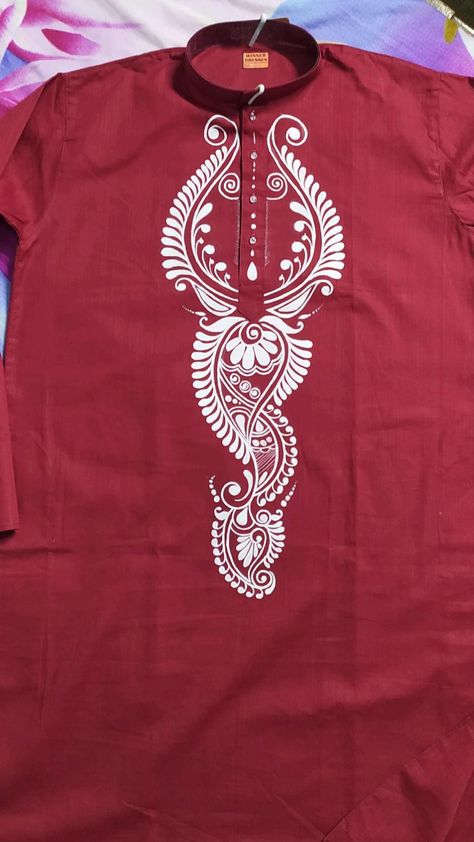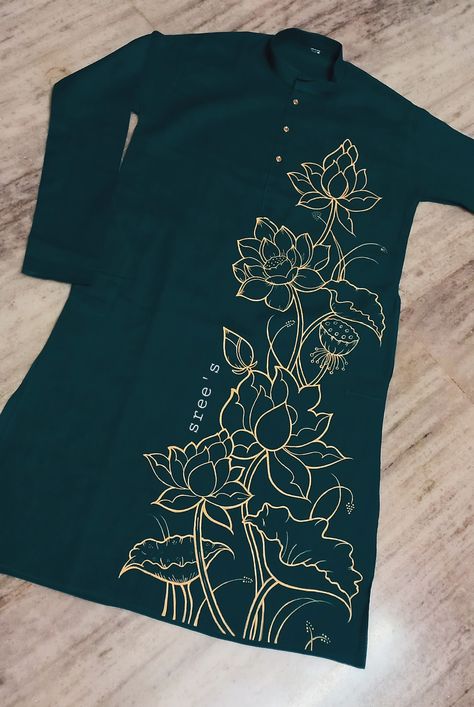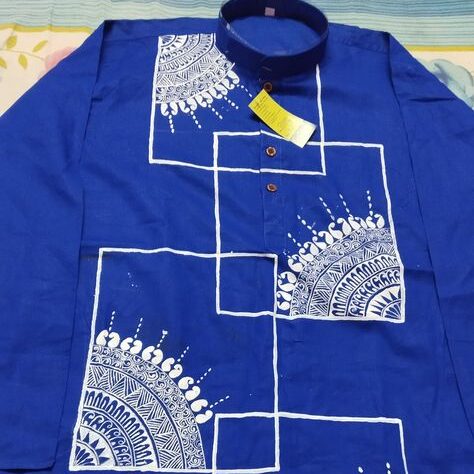Cloth Painting on Punjabi 02
Fabric painting is a vibrant and expressive art form that has deep roots in Punjabi culture. Combining traditional motifs, techniques, and modern interpretations, fabric painting reflects the rich heritage of Punjab while providing a medium for personal expression. This class note explores the history, techniques, themes, and contemporary relevance of fabric painting in Punjabi culture.
Historical Background
Origins of Fabric Painting in Punjab

The tradition of fabric painting in Punjab can be traced back to ancient times when artisans began to embellish textiles with intricate designs. Historically, textiles played a crucial role in Punjabi life, not just as garments but as important cultural artifacts used in rituals, celebrations, and daily life.
With the influence of various cultures and dynasties, including the Mughals and Sikhs, the art of fabric painting evolved, incorporating new techniques and styles. The use of natural dyes and organic materials reflects the connection to the land and the cultural practices of the region.
Traditional Techniques and Styles
Historically, Punjabi fabric painting employed various techniques that highlighted the artisan’s skill and creativity. Some notable techniques include:
- Block Printing: This involves using carved wooden blocks to stamp designs onto fabric. Block printing allows for repetitive patterns and is often seen in traditional Punjabi textiles.
- Hand-Painting: Artists use brushes and natural dyes to paint intricate designs directly onto the fabric. This technique allows for detailed work and personalization.
- Embroidery: While technically distinct from painting, embroidery techniques like Phulkari often accompany fabric painting, enhancing the overall design.
Characteristics of Punjabi Fabric Painting
Themes and Motifs
Punjabi fabric painting is rich in themes that reflect the culture, spirituality, and everyday life of the region. Common motifs include:
- Nature: Flowers, birds, and other natural elements are frequently depicted, symbolizing beauty and fertility.
- Folklore and Mythology: Scenes from Punjabi folklore and mythology, including depictions of local legends and historical figures, are often illustrated.
- Daily Life: Fabrics may showcase scenes of rural life, celebrating traditional activities such as farming, harvesting, and festivities.
Color Palette
The color palette of Punjabi fabric painting is bold and vibrant, often featuring bright reds, yellows, greens, and blues. These colors are typically derived from natural sources, such as:
- Vegetable Dyes: Extracts from plants and fruits are used to create a wide range of colors.
- Mineral Dyes: Earthy tones and shades are derived from minerals, adding depth and richness to the fabric.
The use of these colors not only enhances the aesthetic appeal but also carries symbolic meanings, such as joy, prosperity, and spirituality.
Patterns and Designs

The patterns in Punjabi fabric painting are often intricate and repetitive, showcasing the artist’s skill. The designs may range from geometric shapes to elaborate floral arrangements, with attention to detail being paramount. This complexity creates a visually stimulating effect that draws viewers in.
Techniques of Fabric Painting
Preparation of Fabric
Before painting, the fabric is usually prepped to ensure the colors adhere properly. This may involve washing the fabric to remove any impurities and sometimes treating it with a mordant to fix the dyes.
Drawing and Outlining
Artists often start by sketching the design lightly on the fabric using chalk or pencil. Once the outline is established, they proceed to paint the main elements, using brushes of various sizes for detail work.
Application of Colors
Using traditional natural dyes, artists apply colors to the fabric, layering them to achieve depth. This process often requires multiple applications to achieve the desired vibrancy and consistency.
Finishing Techniques
After the painting is complete, the fabric is usually set to dry. Some artists may apply a finishing layer or treatment to enhance durability and maintain the colors over time.
Contemporary Punjabi Fabric Painting
Revival and Modern Interpretations
In recent years, there has been a revival of interest in traditional Punjabi fabric painting, as artisans and designers incorporate modern aesthetics into their work. Contemporary artists are experimenting with new techniques and materials, blending traditional motifs with modern themes.
Integration with Fashion
Punjabi fabric painting has found a place in contemporary fashion, with designers using painted fabrics to create unique garments. This fusion of traditional art and modern fashion not only keeps the art form alive but also introduces it to a broader audience.
Community Empowerment
Various initiatives aim to empower local artisans through training programs, workshops, and platforms to sell their work. These initiatives not only support the artists economically but also help preserve the traditional skills associated with Punjabi fabric painting.
Educational Programs
Educational institutions and cultural organizations are beginning to include fabric painting in their curricula. Workshops and courses allow young artists to learn traditional techniques, ensuring the continuity of this important cultural practice.
Cultural Significance
Expression of Identity
Fabric painting in Punjabi culture serves as a means of expressing regional identity and cultural pride. The motifs and techniques used often reflect the values, beliefs, and traditions of Punjabi society.
Role in Festivals and Celebrations
Painted fabrics are integral to various Punjabi festivals and celebrations, such as Vaisakhi and Lohri. They are used in traditional attire, decorations, and even as gifts, enhancing the festive spirit.
Preservation of Heritage

Through fabric painting, artisans play a crucial role in preserving the cultural heritage of Punjab. The art form serves as a connection to the past, allowing new generations to engage with their cultural history while fostering creativity and innovation.
Conclusion
Punjabi fabric painting is a dynamic and expressive art form that embodies the cultural richness of the Punjab region. Its history, characterized by traditional techniques and themes, reflects the deep-rooted values and beliefs of Punjabi society. As the art form continues to evolve and adapt to contemporary contexts, it remains a testament to the resilience and creativity of Punjabi artisans. By supporting and appreciating Punjabi fabric painting, we contribute to the preservation of a unique cultural legacy that enriches our collective experience and understanding of art and heritage.
